Japanese Apartment Hunting
Craigslist, eat your heart out
Over the past 10 years, I’ve spent a lot of time looking for apartments in both Vancouver and in Tokyo. It’s been an interesting chance to compare two very different cities.
Vancouver has a remarkably low vacancy rate, so right off the bat renters are competing for a very small pool of available homes. Apartment hunters are also usually stuck with Craigslist. Craigslist is far and away the best place for browsing apartments in Vancouver, but not because it’s a well-designed site. It’s a perfect example of network effects: it offers a poor user experience, but landlords can’t afford to ignore the large pool of renters using Craigslist and vice versa.
Things are very different in Tokyo. It seems difficult to get comparable rental vacancy data (see the numbers and caveats here), but the sheer number of rental listings available online makes me suspect that the vacancy rate is much higher than in Metro Vancouver. The tools are better too: apartments tend to be listed by brokers on a few big websites, and the experience for renters on those websites is much better than on Craigslist.
Since most North Americans don’t know what they’re missing, I’ll give a quick overview of what it’s like to look for an apartment in Japan.
Apartment listing sites in Japan
There are a handful of big listing sites in Japan:
Suumo and At Home handle all kinds of real estate listings, but Apamanshop specializes in the rental market. Let’s take a look at rental options in the Kanto region (which includes Tokyo) on Suumo:
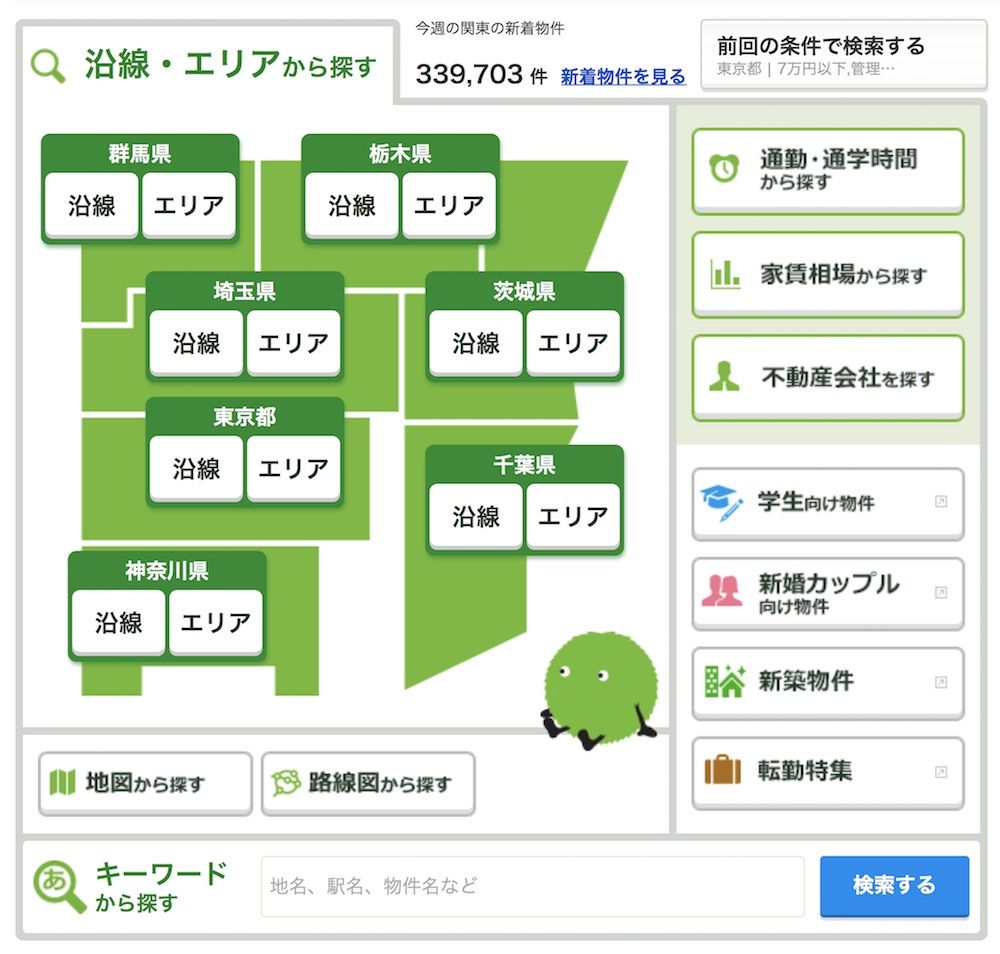
Here we have a map of the different Kanto prefectures plus Tokyo. For each of those areas you can pick whether you want to search by train line or by sub-area. Up top, it says that there are 339,703 new listings this week in the Kanto region (!!!). If we want to search the entire Kanto region, there are yet more options on the bottom and right:
- Search by commute time (enter your places of work or study and how long you’re willing to spend on the train, and this will show you listings within commuting distance)
- Search by rental price (this lets you specify which type of home you’re looking for, then shows you the average monthly rent for that type near various neighbourhoods and train stations)
- Search by regular map
- Search by train map
Just to get a sense of what’s out there, let’s try browsing Tokyo by train line:
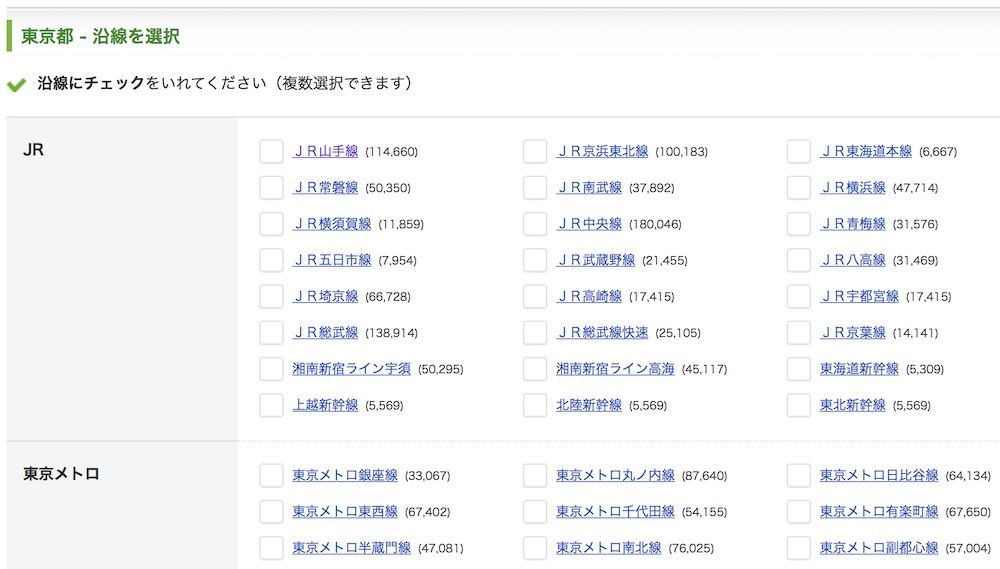
In this screen we’re just picking train lines to narrow down our search. The train lines are divided up by operator (JR, Tokyo Metro, and various private railways), and the numbers in parentheses show how many housing units are available for rent near each line. There is certainly some overlap between lines, but it’s still amazing to see so many train lines with thousands and thousands of homes listed nearby.
A specific apartment search
Now let’s look for something more specific. I’m a Metafilter regular, and last year I stumbled across this heartbreaking question. A young Seattle resident was looking for “a room in the $500/month range, within a 90 minute commute from downtown,” and multiple commenters jumped in to say that this isn’t possible. This would be very difficult in Vancouver too – let’s see if it’s achievable in Tokyo.
$500 USD is about 55,000 JPY. Tokyo doesn’t have a single “downtown” persay, but it does have a few major transit hubs. Shinjuku Station is the busiest train station in the world, due to the huge number of rail lines connecting to it. To approximate a “90 minute commute from downtown”, let’s look for an apartment within a 1-hour commute to Shinjuku (since from Shinjuku you should be able to get just about anywhere in ultra-central Tokyo in 30 minutes).
To search for something like that, I’ll use the following conditions:
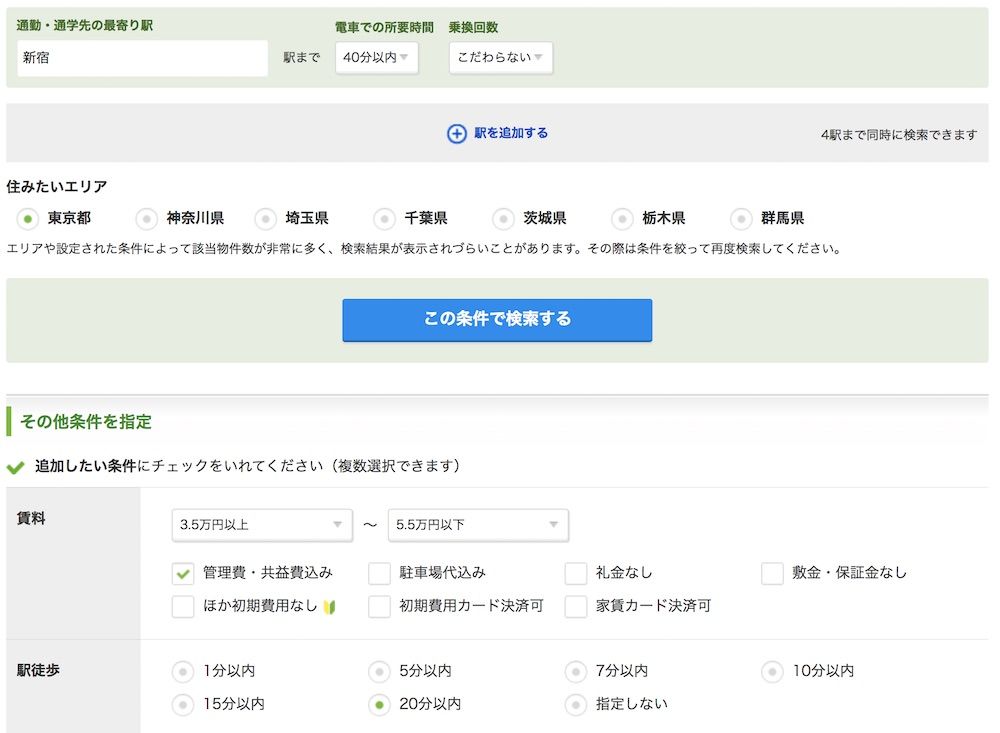
- Within 40 minutes (by train) of Shinjuku Station
- Within a 20 minute walk of a local train station
- Between 35,000 and 55,000 JPY/month (the minimum is intended to exclude really low-end places), including management fees
- In Tokyo (we could get more results by including the surrounding prefectures, but Suumo only lets you choose one area at a time)
With those search conditions we get 76,884 results:
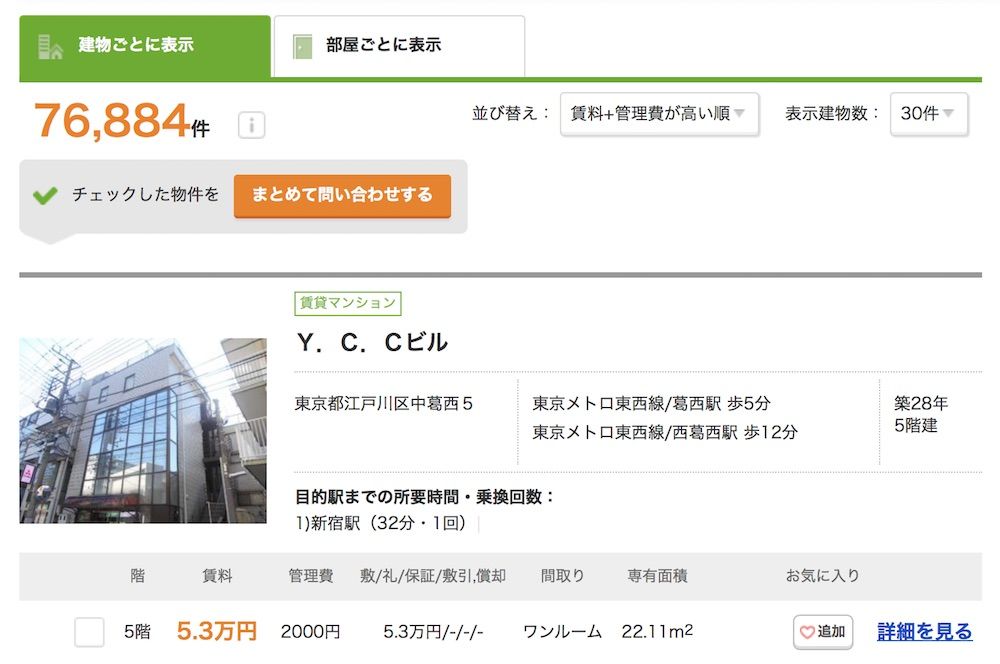
Most of these apartments are small (as you’d expect on a budget like this), but you might be surprised by how clean+modern many of them are:
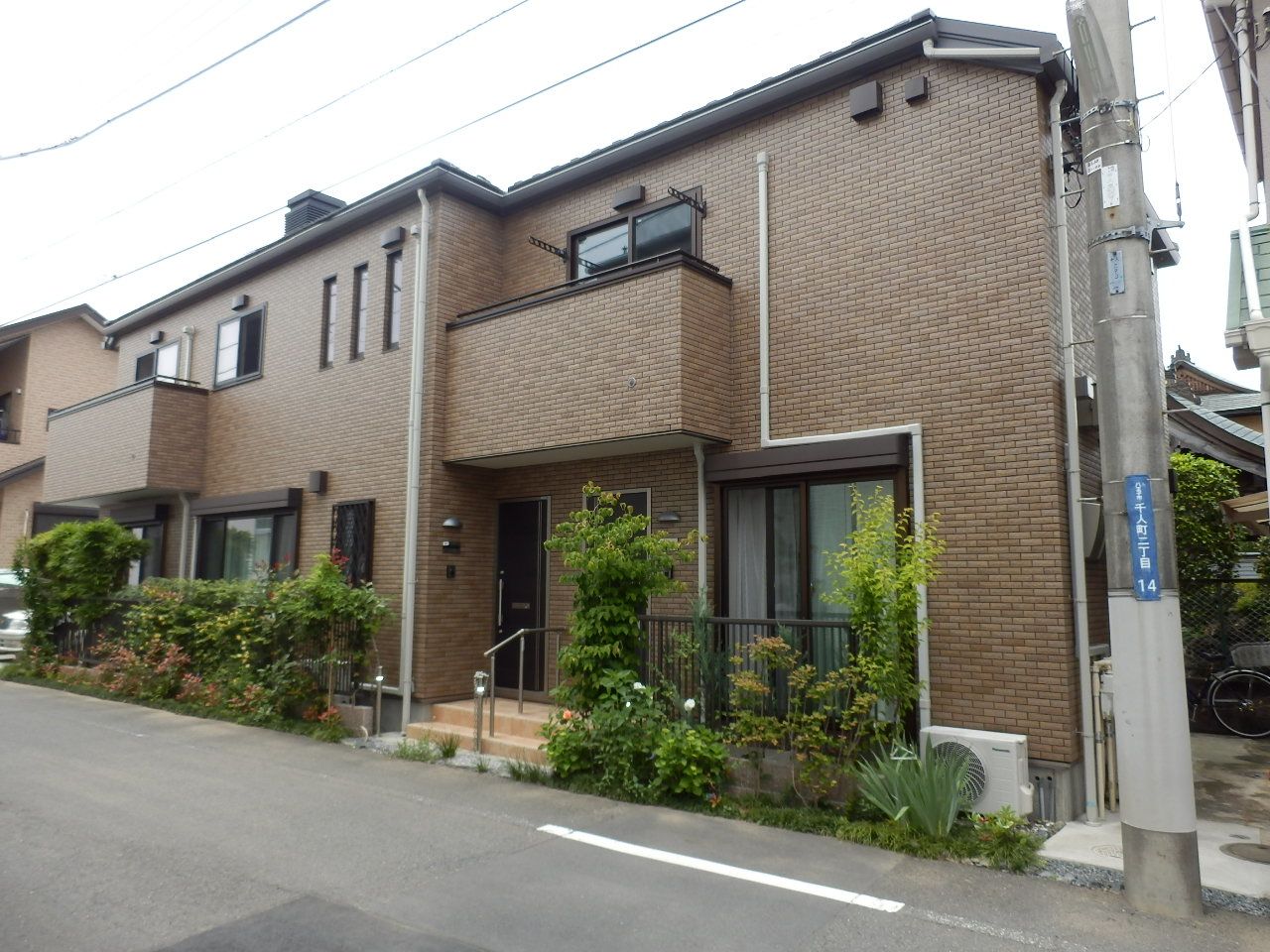
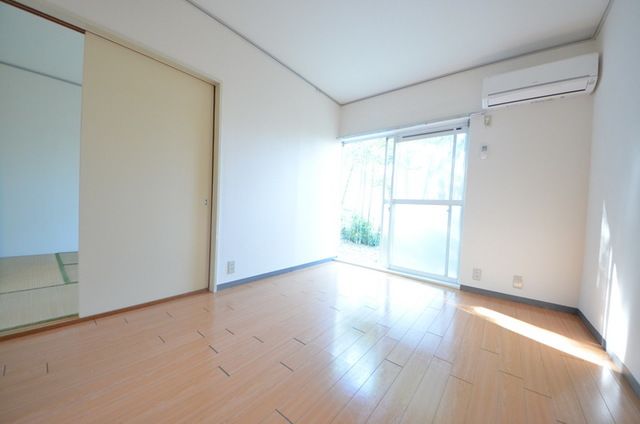
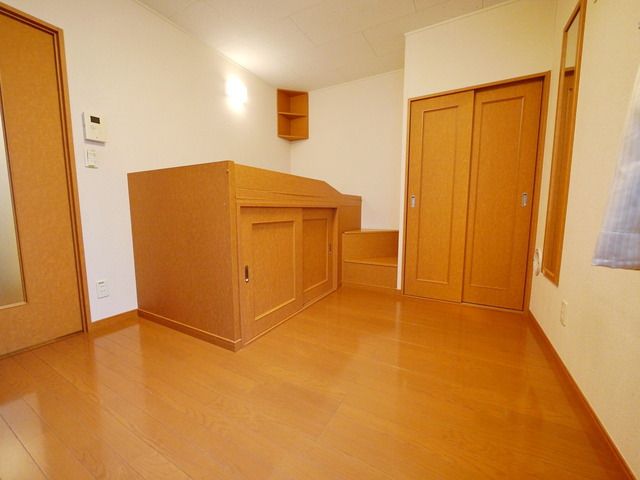
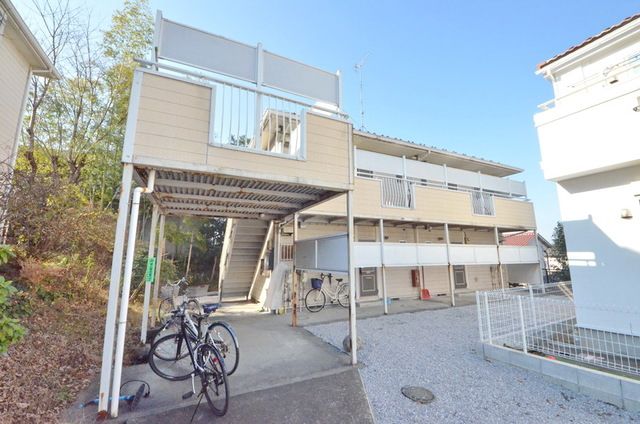
At this point it should be clear that low-income urban residents have a much easier time finding housing in Tokyo than in many other world cities. I think this is largely due to Japan’s unique land use policies, and I’ll elaborate on that in future posts.
More Search Options
I used some pretty vanilla search parameters above, but you can specify a lot more search conditions on Japanese websites. You can browse the search page translated to English if you want to see all of the available search parameters. These are just a few of the options that I find useful:
- Distance from the nearest train station (can look for homes within a 5 minute walk of a train station, for example)
- Floor area
- Age of building
- Construction material (wood frame, steel frame, etc.)
- Distance from amenities (supermarkets, convenience stores, parks)
- Does it have a balcony/air conditioner/bike storage?
The especially nice thing about this is that nearly every listing has this information populated correctly. Anyone who’s ever suffered through Craigslist’s sea of low-effort listings will be thankful for that.



